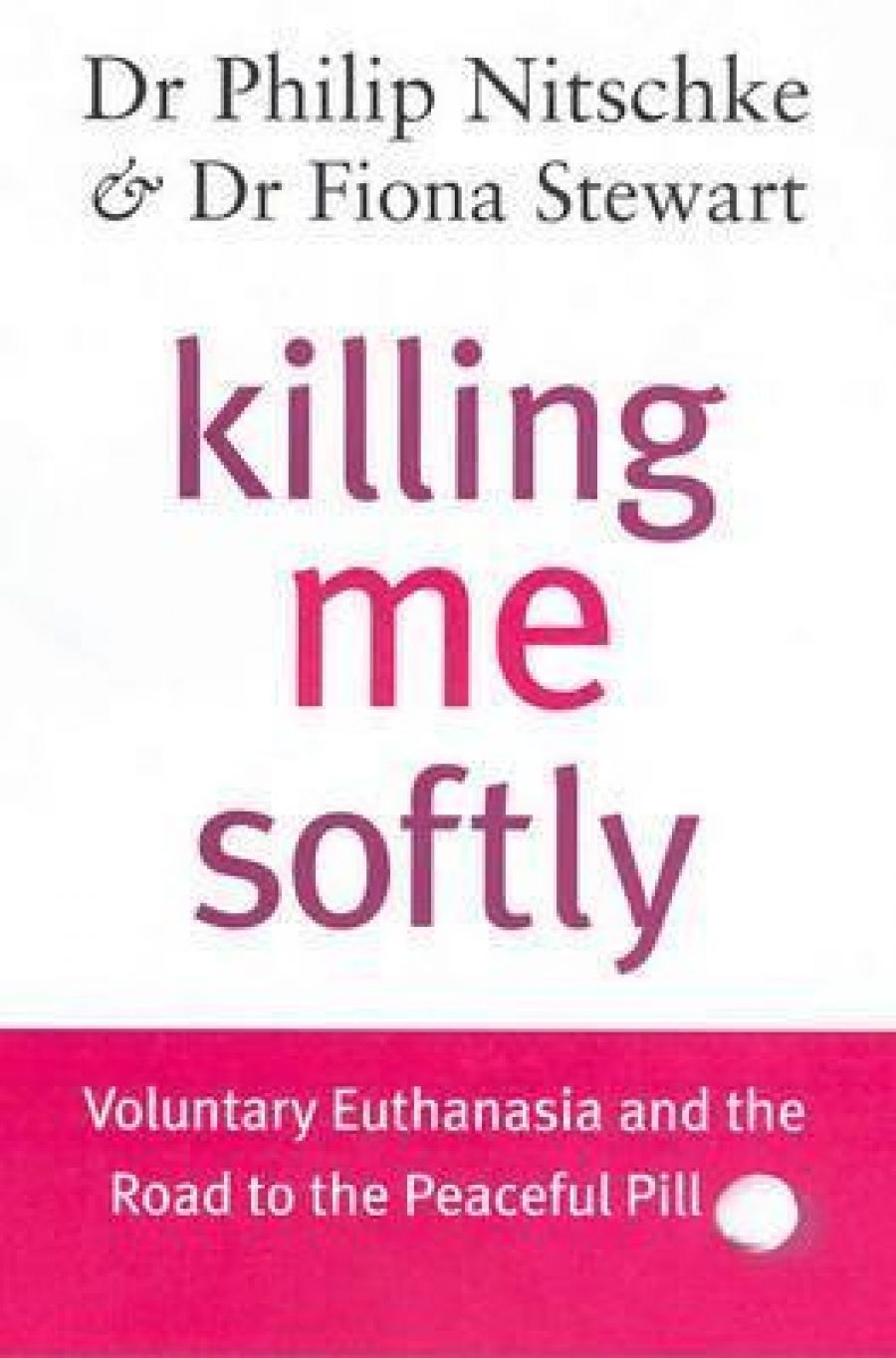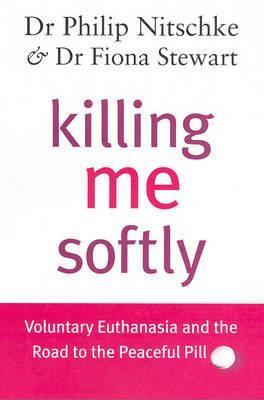
- Free Article: No
- Contents Category: Society
- Review Article: Yes
- Article Title: Exit members
- Online Only: No
- Custom Highlight Text:
‘While some inventors concern themselves with creating the ultimate mousetrap,’ Philip Nitschke explains, ‘my aims are more modest. At the heart of all my efforts is a desire to fulfil the needs of Exit members.’
The members of Exit International – an organisation that has attracted 3000 members since its foundation by Nitschke in 1997, and that is now co-directed by Fiona Stewart – are mostly older and seriously ill people who ‘want a choice about when and how they die’. According to the argument of this book, the satisfaction of their needs requires easily accessible technology that will enable them to die at will, with dignity, painlessly and swiftly. ‘Dying with dignity is a growth industry,’ the authors declare. Exit hopes ‘to meet the needs of the baby boomer generation … [T]he most important of Exit’s current work is our research and development program. Focused upon a range of smart and simple technologies, this program offers some real and practical end-of-life choices for the future.’
- Book 1 Title: Killing Me Softly
- Book 1 Subtitle: Voluntary euthanasia and the road to the peaceful pill
- Book 1 Biblio: Penguin, $32.95 pb, 354 pp
- Book 1 Cover Small (400 x 600):

- Book 1 Cover (800 x 1200):

For legal reasons, details of these marvels are scarce in the book, but their names are evocative: the Deliverance Machine (a computer and canula contraption), the Aussie Exit Bag, the CoGenie (it has to do with carbon monoxide) and the Peaceful Pill (still at the prototype stage, apparently, but promising ‘a big future, and not only for the seriously ill but for all rational, elderly members of our community’).
Nitschke’s modesty is, of course, a contortion, and the unnerving disjunction between the gravity of the subject and the commercial vulgarity of his language suggests something a little daffy. But his intentions are serious and, despite its many defects – its want of philosophy and rigour, its indifference to contrary argument, a clichéd prose that almost makes the reader yearn for Nitschke’s services – the book’s subject renders it noteworthy.
The narrative takes up the passage of a conscientious medical practitioner who starts by supporting euthanasia law reform and ends by trying to dodge the law with DIY suicide devices. Its course exposes much that is important about end-of-life options for people who are terminally ill, suffering intolerably, incarcerated for life, or just weary of it all (but sane).
The focus is on three of these options: killing yourself, getting others to help you kill yourself and getting others to kill you. The other options, those predicated on just bearing up and dying, get short shrift, though there is some discussion of the limits of palliative care. The reason for this neglect seems to be the premise that the authors share with all the elderly or dying writers of the many moving and articulate letters reproduced in the book. It is that, once life becomes a burden with no relief in sight, there remains no good reason for not ending it as quickly and painlessly as possible.
The opening, autobiographical chapter offers glimpses of an independent, politically active man who, after study-ing physics and after a spell as a ranger, takes a medical degree, settles in Darwin and is caught up in the storm precipitated by the Northern Territory’s ground-breaking Rights of the Terminally Ill Act 1995. To Nitschke, it was common sense that a terminally ill person should be able to choose when and how to die; and he seemed to think it self-evident that providing euthanasia should be a part of every doctor’s ‘professional toolkit’. The federal government’s unconscionable obviation of the Act, but more, perhaps, Nitschke’s animosity to the Australian Medical Association and to the Catholic Church for their opposition to the Act, projected him into the vocation for which he is now notorious.
The strategy for sustaining euthanasia arrived at in this book is a creature of Nitschke’s subsequent experience and despair: the moral and religious conservatism that is darken-ing much of the world has also cast its shadow on the prospects of rational law reform. The current situation is this: voluntary euthanasia is illegal in all Australian jurisdictions, but suicide is not; assisted suicide is illegal but its definition vague; in general, it is illegal to aid, incite or counsel suicide; and there is legislation pending that may soon criminalise the transmission of material dealing with suicide over the Internet. Nitschke’s solution is twofold. On the one hand, to develop accessible DIY suicide technology, especially the ‘Peaceful Pill’, which can be self-administered by all but the most severely disabled; and, on the other, to spread the responsibility for its development and the dissemination of information to large workshops of the sort organised by Exit. As Nitschke sees it, this is mass civil disobedience directed against bad law.
I suspect that a majority of people in Australia would support Nitschke’s conclusions even if they recoiled from the gaucheness of his argument and his incapacity to see anything of value in his opponents’ views. The matter of euthanasia is complex, but one thread seems clear. Rational people whose death would not cause foreseeable harm to others have the right to suicide. I know of no sound argument in philosophy to the contrary. There is a Christian view that our lives do not belong to us; but that is an infantile fantasy, not an argument. Suicide may be thought contemptible, but that is not relevant. However, from that right to die it does not follow that we have the further right to demand that someone dispatch us. There is no such right, but there are obligations of compassion to the suffering, which, as is well known, many medical practitioners and others discharge, notwithstanding the current state of law. It is an uphill struggle, but the law has to be changed – not evaded – to accommodate those obligations while retaining its function of protecting the vulnerable.


Comments powered by CComment